Cyclopentane
Synonym(s):Cyclopentane;Pentamethylene
- CAS NO.:287-92-3
- Empirical Formula: C5H10
- Molecular Weight: 70.13
- MDL number: MFCD00001356
- EINECS: 206-016-6
- SAFETY DATA SHEET (SDS)
- Update Date: 2025-12-22 10:14:12

What is Cyclopentane?
Description
Cyclopentane is a colorless liquid. Molecularweight=70.15; Specific gravity=(H2O:1)=0.75; Boilingpoint=49℃; Freezing/Melting point=2 93.6℃; Vaporpressure=400 mmHg at 31℃; Relative vapor density (air-5 1)=2.42: Flash point=37.2℃; Autoignitiontemperature=361℃. Explosive limits in air: LEL=1.1%;UEL=8.7%. Hazard Identification (based on NFPA-704 MRating System): Health 1, Flammability 3, Reactivity 0.Insoluble in water
Chemical properties
Cyclopentane is a colourless flammable acyclic hydrocarbon liquid with a petrol-like smell. It is a widely used component in preparing products like analgesics, insecticides, sedatives, antitumor agents and also finds application in pharmaceutical industry.
Physical properties
Colorless, mobile, flammable liquid with an odor resembling cyclohexane.
The Uses of Cyclopentane
Cyclopentane is a petroleum product. Itis formed from high-temperature catalyticcracking of cyclohexane or by reduction ofcyclopentadiene. It occurs in petroleum etherfractions and in many commercial solvents.It is used as a solvent for paint, in extractionsof wax and fat, and in the shoe industry.
The Uses of Cyclopentane
As a laboratory reagent; in the manufacture of pharmaceuticals; found in solvents and in petroleum ether; propellant pressurizing agent.
The Uses of Cyclopentane
Cyclopentane is used as green blowing agent and involved in the production of polyurethane insulating foam, which is used in refrigerators, freezers, water heaters, construction panels, insulated pipes and roofs. As a lubricant, it finds applications in computer hard drives and outer space equipment due to its low volatile nature. It is widely useful in the preparation of resin, adhesives and pharmaceutical intermediate. It is an additive in gasoline. Since it is a halogen free compound and has zero-ozone depletion potential, it replaces the conventionally used chloro fluoro carbon (CFC) in refrigeration and thermal insulation.
What are the applications of Application
Cyclopentane is an acyclic hydrocarbon that occurs in petroleum
Definition
ChEBI: A cycloalkane that consists of five carbons each bonded with two hydrogens above and below the plane. The parent of the class of cyclopentanes.
Production Methods
Cyclopentane occurs in petroleum ether fractions and is prepared by cracking cyclohexane in the presence of alumina at high temperature and pressure or by reduction of cyclopentadiene.
General Description
A clear colorless liquid with a petroleum-like odor. Flash point of -35°F. Less dense than water and insoluble in water. Vapors are heavier than air.
Air & Water Reactions
Highly flammable. Insoluble in water.
Reactivity Profile
CYCLOPENTANE is incompatible with strong oxidizing agents such as chlorine, bromine, fluorine. .
Health Hazard
Cyclopentane is a low-acute toxicant. Itsexposure at high concentrations may producedepression of the central nervous system withsymptoms of excitability, loss of equilibrium,stupor, and coma. Respiratory failure may occur in rats from 30–60 minutes’ exposureto 100,000–120,000 ppm in air. It is anirritant to the upper respiratory tract, skin,and eyes. No information is available inthe literature on the chronic effects fromprolonged exposure to cyclopentane.
Fire Hazard
Behavior in Fire: Containers may explode.
Flammability and Explosibility
Highly flammable
Chemical Reactivity
Reactivity with Water No reaction; Reactivity with Common Materials: No reaction; Stability During Transport: Stable; Neutralizing Agents for Acids and Caustics: Not pertinent; Polymerization: Not pertinent; Inhibitor of Polymerization: Not pertinent.
Safety Profile
Mildly toxic by ingestion and inhalation. High concentrations have narcotic action. A very dangerous fire hazard when exposed to heat or flame; can react with oxidizers. To fight fire, use foam, CO2, dry chemical. When heated to decomposition it emits acrid smoke and fumes.
Potential Exposure
Cyclopentane is used as a solvent.
First aid
If this chemical gets into the eyes, remove anycontact lenses at once and irrigate immediately for at least15 min, occasionally lifting upper and lower lids. Seek medical attention immediately. If this chemical contacts theskin, remove contaminated clothing and wash immediatelywith soap and water. Seek medical attention immediately. Ifthis chemical has been inhaled, remove from exposure,begin rescue breathing (using universal precautions, including resuscitation mask) if breathing has stopped and CPR ifheart action has stopped. Transfer promptly to a medicalfacility. When this chemical has been swallowed, get mediing resuscitation mask) if breathing has stopped and CPR ifheart action has stopped. Transfer promptly to a medicalfacility. When this chemical has been swallowed, get medical attention. Do not induce vomiting, guard against aspiration. Medical observation is recommended for 24-48 hafter breathing overexposure, as pulmonary edema may bedelayed. As first aid for pulmonary edema, a doctor orauthorized paramedic may consider administering a corticosteroid spray.
Source
Component of high octane gasoline (quoted, Verschueren, 1983). Harley et al. (2000)
analyzed the headspace vapors of three grades of unleaded gasoline where ethanol was added to replace methyl tert-butyl ether. Cyclopentane was detected at an identical concentration of 1.4 wt
% in the headspace vapors for regular, mid-, and premium grades.
Schauer et al. (1999) reported cyclopentane in a diesel-powered medium-duty truck exhaust at
an emission rate of 410 μg/km.
California Phase II reformulated gasoline contained cyclopentane at a concentration of 4.11
g/kg. Gas-phase tailpipe emission rates from gasoline-powered automobiles with and without
catalytic converters were 0.78 and 85.4 mg/km, respectively (Schauer et al., 2002).
Environmental Fate
Biological. Cyclopentane may be oxidized by microbes to cyclopentanol, which may oxidize to
cyclopentanone (Dugan, 1972).
Photolytic. The following rate constants were reported for the reaction of octane and OH
radicals in the atmosphere: 3.7 x 10-12 cm3/molecule?sec at 300 K (Hendry and Kenley, 1979); 5.40
x 10-12 cm3/molecule?sec (Atkinson, 1979); 4.83 x 10-12 cm3/molecule?sec at 298 K (DeMore and
Bayes, 1999); 6.20 x 10-12, 5.24 x 10-12, and 4.43 x 10-12 cm3/molecule?sec at 298, 299, and 300 K,
respectively (Atkinson, 1985), 5.16 x 10-12 cm3/molecule?sec at 298 K (Atkinson, 1990), and 5.02
x 10-12 cm3/mol·sec at 295 K (Droege and Tilly, 1987).
Chemical/Physical. Cyclopentane will not hydrolyze because it has no hydrolyzable functional
group. Complete combustion in air yields carbon dioxide and water.
At elevated temperatures, rupture of the ring occurs forming ethylene and presumably allene
and hydrogen (Rice and Murphy, 1942).
Storage
Color Code—Red: Flammability Hazard: Store ina flammable liquid storage area or approved cabinet awayfrom ignition sources and corrosive and reactive materials.Prior to working with cyclopentane you should be trainedon its proper handling and storage. Before entering confinedspace where cyclopentane may be present, check to makesure that an explosive concentration does not exist. Store intightly closed containers in a cool well-ventilated area awayfrom strong oxidizers (such as chlorine, bromine, and fluorine). Use only nonsparking tools and equipment, especiallywhen opening and closing containers of cyclopentane.Metal containers involving the transfer of this chemicalshould be grounded and bonded. Where possible, automatically pump liquid from drums or other storage containers toprocess containers. Drums must be equipped with selfclosing valves, pressure vacuum bungs, and flame arresters.Use only nonsparking tools and equipment, especially whenopening and closing containers of this chemical. Sources ofignition, such as smoking and open flames, are prohibitedwhere this chemical is used, handled, or stored in a mannerthat could create a potential fire or explosion hazard.Wherever this chemical is used, handled, manufactured, orstored, use explosion-proof electrical equipment andfittings.
Shipping
UN1146 Cyclopentane, Hazard Class: 3; Labels: 3-Flammable liquid.
Purification Methods
Free it from cyclopentene by two passages through a column of carefully dried and degassed activated silica gel. It occurs in petroleum and is HIGHLY FLAMMABLE. [NMR: Christl Chem Ber 108 2781 1975, Whitesides et al. 41 2882 1976, Beilstein 5 III 10, 5 IV 4.]
Incompatibilities
May form explosive mixture with air. May accumulate static electrical charges, and may cause ignition of its vapors. Contact with strong oxidizers may cause fire and explosion.
Waste Disposal
Dissolve or mix the material with a combustible solvent and burn in a chemical incinera- tor equipped with an afterburner and scrubber. All federal, state, and local environmental regulations must be observed.
Properties of Cyclopentane
| Melting point: | -94 °C (lit.) |
| Boiling point: | 50 °C (lit.) |
| Density | 0.751 g/mL at 25 °C (lit.) |
| vapor density | ~2 (vs air) |
| vapor pressure | 18.93 psi ( 55 °C) |
| refractive index | n |
| Flash point: | −35 °F |
| storage temp. | Store below +30°C. |
| solubility | 0.156g/l insoluble |
| form | Powder |
| color | White |
| Odor | Like gasoline; mild, sweet. |
| explosive limit | 1.5-8.7%(V) |
| Water Solubility | Miscible with ethanol, ether and acetone. Slightly miscible with water. |
| λmax | λ: 198 nm Amax: 1.0 λ: 210 nm Amax: 0.50 λ: 220 nm Amax: 0.10 λ: 240-400 nm Amax: 0.01 |
| Merck | 14,2741 |
| BRN | 1900195 |
| Henry's Law Constant | 0.164, 0.240, and 0.300 at 27.9, 35.8, and 45.0 °C, respectively (dynamic headspace, Hansen et al.,
1995) |
| Dielectric constant | 1.9(20℃) |
| Exposure limits | TLV-TWA 600 ppm (~1720 mg/m3)
(ACGIH). |
| Stability: | Stable. Highly flammable. Note low flash point and wide explosion limits. Incompatible with strong oxidizing agents. Floats on water, so water is of limited value in putting out fires involving this material. |
| CAS DataBase Reference | 287-92-3(CAS DataBase Reference) |
| NIST Chemistry Reference | Cyclopentane(287-92-3) |
| EPA Substance Registry System | Cyclopentane (287-92-3) |
Safety information for Cyclopentane
| Signal word | Danger |
| Pictogram(s) |
 Flame Flammables GHS02 |
| GHS Hazard Statements |
H225:Flammable liquids H412:Hazardous to the aquatic environment, long-term hazard |
| Precautionary Statement Codes |
P210:Keep away from heat/sparks/open flames/hot surfaces. — No smoking. P273:Avoid release to the environment. |
Computed Descriptors for Cyclopentane
Cyclopentane manufacturer
JSK Chemicals
New Products
4,4-Difluoropiperidine hydrochloride tert-butyl 9-methoxy-3-azaspiro[5.5]undecane-3-carboxylate Indole Methyl Resin N-Isopropylurea N,N-Dicyclohexylcarbodiimide(DCC) MELDRUMS ACID 5-METHYLISOXAZOLE-4-CARBOXYLIC ACID Magnessium Bis glycinate Zinc ascorbate 1-bromo-2-butyne 2-acetamidophenol 9(10H)-anthracenone Erythrosin B, 4-Piperidinopiperidine 2-((4-morpholinophenylamino) (methylthio) methylene) malononitrile 2,4-dihydroxybenzaldehyde 3-(4-morpholinophenylamino)-5-amino-1H-pyrazole-4-carbonitrile Methyl 2-methylquinoline-6-carboxylate 2,6-dichloro-4-nitropyridine 4-Bromo-2-chlorobenzonitrile 2-(benzylamino)acetic acid hydrochloride 4-(tert-Butoxycarbonylamino)but- 2-ynoic acid 3,4-dihydro-2H-benzo[b][1,4]dioxepine 1-Phenyl-1-cycloprppanecarboxylicacidRelated products of tetrahydrofuran
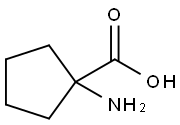

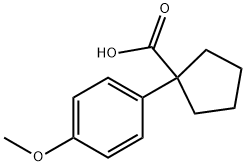
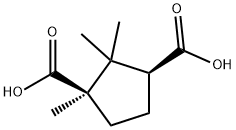
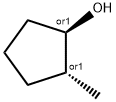

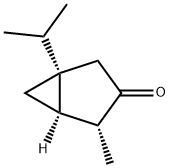

You may like
-
 287-92-3 98%View Details
287-92-3 98%View Details
287-92-3 -
 Cyclopentane, Contains 75+% cyclopentane. Remainder consists of C<sub>5</sub> and C<sub>6</sub> hydrocarbons . CAS 287-92-3View Details
Cyclopentane, Contains 75+% cyclopentane. Remainder consists of C<sub>5</sub> and C<sub>6</sub> hydrocarbons . CAS 287-92-3View Details
287-92-3 -
 Cyclopentane CAS 287-92-3View Details
Cyclopentane CAS 287-92-3View Details
287-92-3 -
 Cyclopentane CAS 287-92-3View Details
Cyclopentane CAS 287-92-3View Details
287-92-3 -
 CYCLOPENTANE For Synthesis CAS 287-92-3View Details
CYCLOPENTANE For Synthesis CAS 287-92-3View Details
287-92-3 -
 Cyclopentane CAS 287-92-3View Details
Cyclopentane CAS 287-92-3View Details
287-92-3 -
 Cyclopentane CAS 287-92-3View Details
Cyclopentane CAS 287-92-3View Details
287-92-3 -
 CYCLOPENTANE CAS Number: 287-92-3View Details
CYCLOPENTANE CAS Number: 287-92-3View Details
287-92-3
